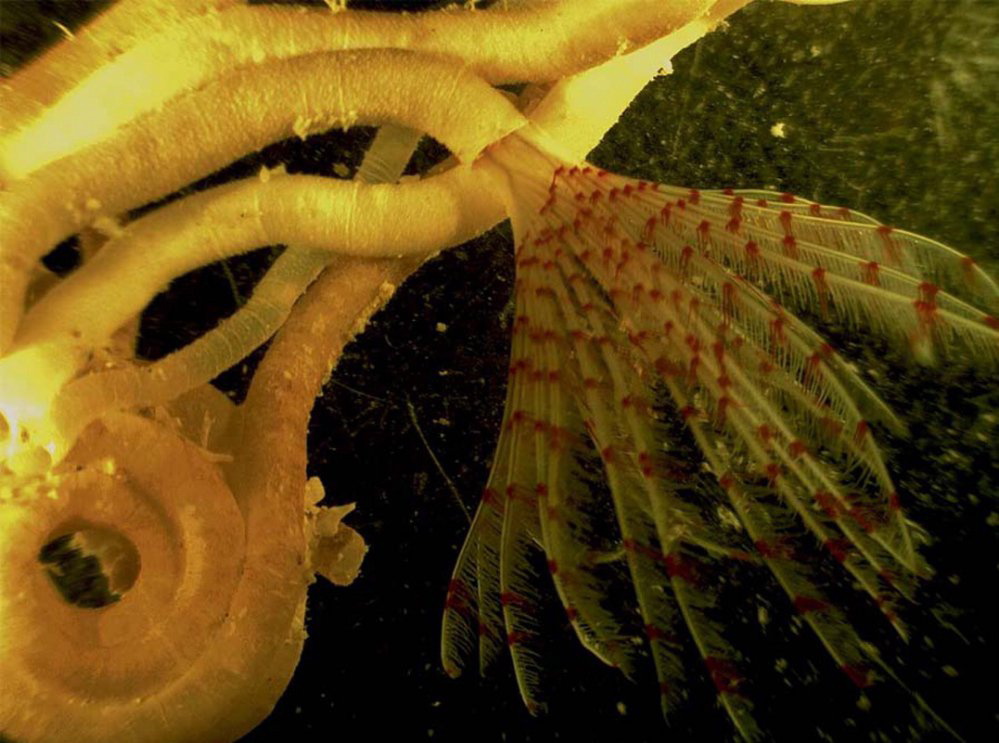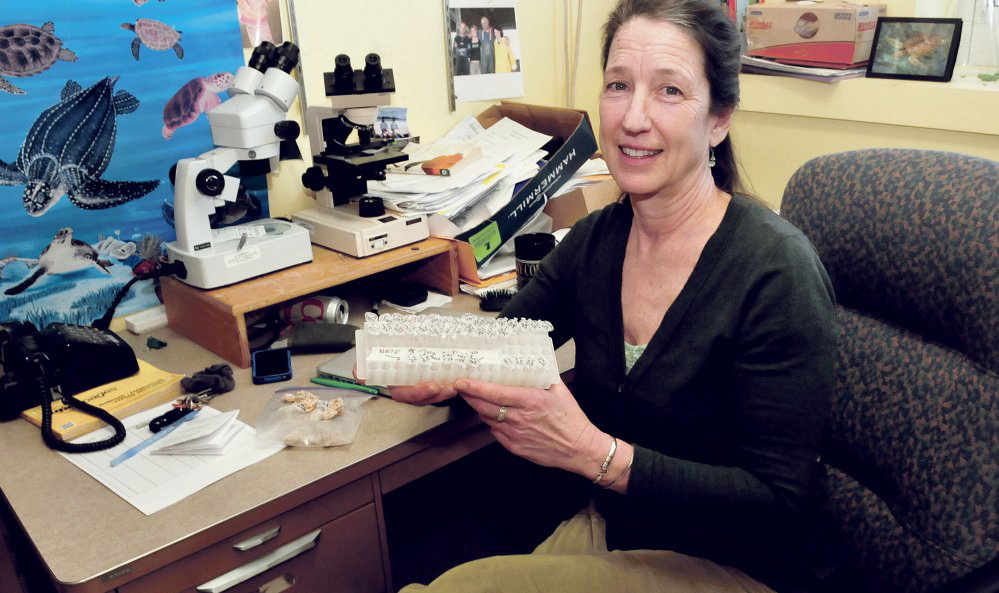A member of the University of Maine at Farmington faculty was credited recently with discovering a new genus and species of marine worm, which she first spotted near the U.S. Virgin Islands.
Five years ago, Nancy Prentiss, a UMF lecturer in biology, was snorkeling at Hurricane Hole off St. John, an island in the U.S. Virgin Islands, when on the underside of a rock she found fanworms unlike any she had seen before.
At the time of the discovery, Prentiss, who had been teaching UMF students and working as an ecology camp science educator on the island, said she knew immediately the red-and-white worms protected by coiled calcium carbonate tubes were a unique find.
“I had never seen fanworms like these before and knew immediately I was looking at something special,” Prentiss said.
After years of painstaking research, working with experts in Greece and the Netherlands on eliminating the possibility that the worms were part of an existing genus or species, Prentiss published her work on the find in December in the academic journal Zootaxa.
“It’s not just a new species, but a whole new genus,” she said by phone Wednesday. A genus is a biological classification of plants or animals.
The newly discovered worm Turbocavus secretus is named for the location where it was found with “Turbocavus” referring to Hurricane Hole.
Specimens of the new fanworm species now are deposited permanently in the Smithsonian National Museum of Natural History in Washington, D.C. In nature, they have been found only “attached to the undersides of rocks, firmly embedded in fine sediment,” according to the Zootaxa article.
The research, which Prentiss described as a learning process, took years and involved a team of researchers obtaining DNA gene sequences and scanning electron microscope and micro CT scan images of the marine worms.
“It’s very meticulous work,” she said.
Prentiss said the new species is just one find out of a world of marine life waiting to be discovered. Other scientist have dedicated their entire careers to finding new species, genuses or even undiscovered families.
“There’s thousands more out there,” she said. “People just haven’t been able to look.”
Copy the Story LinkSend questions/comments to the editors.




Success. Please wait for the page to reload. If the page does not reload within 5 seconds, please refresh the page.
Enter your email and password to access comments.
Hi, to comment on stories you must . This profile is in addition to your subscription and website login.
Already have a commenting profile? .
Invalid username/password.
Please check your email to confirm and complete your registration.
Only subscribers are eligible to post comments. Please subscribe or login first for digital access. Here’s why.
Use the form below to reset your password. When you've submitted your account email, we will send an email with a reset code.